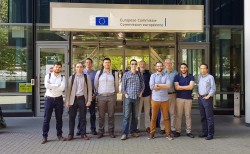H2020 Wi-5 project successfully finished
The scenarios considered not only include airports or business centres, but also residential areas in which wireless interference can be high. In these scenarios, better planning of the channels of the Access Points can provide significant advantages. Different algorithms for power control and channel assignment have been developed by Liverpool John Moores University. The associated business models and the relationships between all the involved actors have been studied by TNO (the Netherlands). In addition, the developed framework includes a central controller that has all the information available, and is therefore able to make smart decisions about the assignment of clients to Access Points. This avoids the problem of the “sticky client” that remains connected to the original Access Point it is associated with, rather than moving to a nearby Access Point, which would be a better choice. In the last months, different tests have been carried out; some of them were run in the labs of the University of Zaragoza, in Spain. Others were performed in an AirTies test house in Istanbul, with robots carrying laptops and mobile phones. Finally, real users also tested the solution in PrimeTel premises in Limassol, Cyprus. Picture: The Wi-5 project team after the final review in Brussels. Video animation summarising the achievements: https://www.youtube.com/watch?v=sqI3tXF1R9s Video of AirTies’ test robots: https://youtu.be/YET4VF67wPQ?t=25 Project web: https://github.com/Wi5 @Wi5Project
Keywords
wifi, research, technology, videogames
Countries
Cyprus, Spain, Netherlands, Türkiye, United Kingdom



